 The
interview was conducted by Anatoly Yavorsky for Chess
Ukraine and the popular Ukrainian magazine "Burjua".
A photo shoot with star photographer Aleksander Strinadko provided the portraits
below.
The
interview was conducted by Anatoly Yavorsky for Chess
Ukraine and the popular Ukrainian magazine "Burjua".
A photo shoot with star photographer Aleksander Strinadko provided the portraits
below.
In the interview Kateryna comes across as an intelligent, open and honest
young lady. Holding her own under some tough questioning, she admits to the
social exclusion that her talent has forced upon her, but at the same time
remains resolutely determined in her fight to not only play in the men’s
game, but to beat them at it as well, a battle she is winning with heartening
regularity.
Despite her many achievements, Kateryna is not boastful, and dismisses the
interviewers attempts to draw her out on the nature of celebrity with a succinct
admonition – ‘My business is to play, to train’.
“The Male Grandmasters Respect Me”
The chapter on chess in the Guinness Book of Records makes pleasant reading
for the Ukrainian chess fan for Ukraine has two submissions: Ruslan Ponomariov
– youngest ever person to be crowned world champion, and Sergey Karjakin
– the world’s youngest grandmaster. However the Guinness experts
have overlooked one other Ukrainian achievement: the youngest female Grandmaster
in history; our very own Kateryna Lahno from Kramatorsk. This record was achieved
a year and a half ago, when she was only 12 years, 4 months and 2 days old!
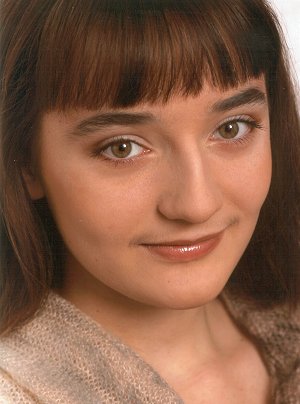
Photo: Aleksander Strinadko
However, Katja is not going to stop there. Last year she gained her first
male GM norm, and now actively competes amongst men. For the last month and
a half Lahno found time to play in, not just one, but two prestigious tournaments
– Hastings and Wijk aan Zee. And though her second norm has yet to materialise,
she has received invaluable experience.
Katja, for a year you’ve only played in men's competitions.
Is Judit Polgar your inspiration?
You develop faster this way: for improvement it is much better to compete
with men. One game with a male Grandmaster is worth ten in a female tournament.
And it’s not only to do with playing men at a master level. The psychological
differences are important also: the men play tougher, more energetically, they
have fewer complexes.
| |
Climbing the Elo scale
Kateryna's FIDE rating on April 1st, 2003 was 2417. She
fulfilled her women's GM norm last April, when she was exactly 12 years,
4 months, 2 days, breaking the previous record held by Judit Polgar.
On December 27th, at the Hastings tournament in England,
Katja turned 14 and had achieved the goal for 2003: to achieve a rating
of 2500. The new and ambitious target for 2004: to reach a rating 2600!
Manager Alexander Martynkov writes: "I understand, that except for
Judit Polgar no female player has achieved such a rating. But I am sure,
that Kateryna will make it."
Kateryna is of course the world's youngest women's GM
and a classical child
prodigy in chess. She was the reigning world under 10 champion until
1999 and the European under 14 champion until 2001.
In the graph on the left we see Kateryna's Elo progress
in the first three years (2000 to 2003) of her chess career. |
And you don’t feel uncomfortable being the only girl surrounded
by men? With their little get-togethers, their conversations?
Yes, sometimes it’s uncomfortable. But it’s okay when I have people
I’m close to round me. I am supported during tournaments by a fellow
club-player, Tanya Kononenko. She is quite a bit older than me, but nevertheless,
I consider her to be my best friend. Although if you really look into it, to
some extent we are also competitors.
Who else are you friends with?
I get on with the Azeri player Turkan Mammadjarova very well, the youngest
player in their chess family. Her older brother and sister are already grandmasters,
they play for the national team, and her father is a famous trainer. Sadly,
I only get to meet up with Turkan at tournaments.
But in general, if I’m being honest, I don’t have many real friends.
Chess players are seldom inclined to make friends with each other and since,
as you would expect, I’m not in school very often. That is why, for me,
my classmates – I simply know them better. But with both chess players
and school friends, we don’t go to the cinema together.
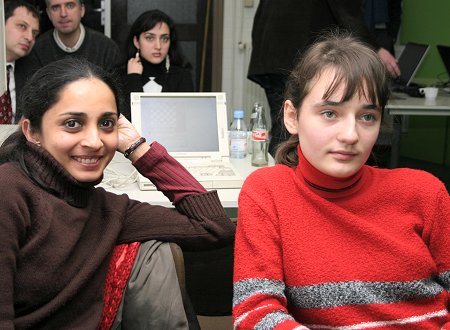
Hanging out with Aruna Anand in Wijk aan Zee (in the background the Leko
clan)
Does playing chess ‘truant’ cause you any problems at
school?
Practically none. I always try to catch up with the things I’ve missed,
and what is more, I am always furthering my education myself. So not long ago
I read “Anna Karenina”, “War and Peace”, “The
Captain’s Daughter”. And from “Yevgeny Onegin” I learnt
by heart five large openings to different chapters, in order to understand
the material and at the same time to train my memory. But that’s literature.
With chemistry, physics and algebra – they’re tougher.
Do the teachers indulge you a little? After all, you are a star in
world chess.
Well, a star – that’s going too far. And as for indulgences, well,
not quite. Put it this way: my teacher understands what I have to do.
Nevertheless your popularity must help you somewhat?
Not especially. On the contrary sometimes it hinders me. In tournaments overseas
the local journalists distract me with their questions, and all the questions
are the same.

Being pestered by a journalist in Wijk aan Zee. Actually that's GM Mikhail
Golubev, a friend and colleague from the Ukraine, doing an interview with her.
But it must be pleasant, when they write about you in the newspapers,
when you’re shown on TV?
It is pleasant, certainly. But I try not to think about it too much. My business
is to play, to train...
This year there are real plans for a World Championship. You appear
in the list of the participants as the candidate of the president of FIDE,
Kirsan Ilyumzhinov. Why, if it isn’t a secret, have you been given this
personal permit?
Probably because I am the youngest female grandmaster in history?
In spite of this president from the president, you decided to fight
still for a place in the men’s championship.
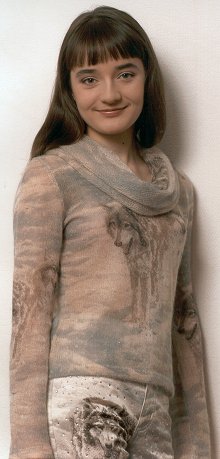
Photo: Aleksander Strinadko
|
Actually, in the elimination tournament in Istanbul I played with the men.
But we didn’t do that with the thought of winning. There was already
very strong opposition there! Moreover, at that moment I didn’t even
have a place from Ilyumzhinov, since he hadn’t even named his candidates.
Therefore from my point of view, it seemed as if it would benefit me to play
in the women’s competition. However on my trainers’ advice we decided
that we would keep my ‘trademark’ and continue to appear in a series
of men’s competitions. I think we got it right. In Istanbul I played
well, having collected exactly one and a half points against the strongest
competitors; four wins, four losses, five draws. I had successful games against
two "big" players – the Macedonian Trajce Nedev and the Croatian
Mladen Palac. In this case all those who played with me said that I act like
an adult, and not like a little girl. This means that male grandmasters
already respect me!
You have already tested your strength in round-robins and in Swiss
events. What is more interesting?
For me the main thing is that the participants are strong. And in this a round-robin
is more comfortable. Look at a Swiss where there are, let’s say, 500
chess players playing, 400 of whom are weak. In the opening round you beat
the outsiders, and at the end you come to the strong player. And if you play
him, you practically lose your chance to claim the prize. So, one defeat can
spoil the whole tournament. And there’s all the money and time spent
on the trip. True, in a Swiss there are rare exceptions. For instance, in the
Moscow Aeroflot-Open,
where I played last year. There the tournament is split into several groups,
and in the main group they only allow the players with the highest ratings.
And although the fees there are very high, then everyone knows what they will
pay.
Now you are in the top-ten best female chess players in the world.
It follows then that this has changed not only your approach to your selection
of tournaments, but also to your training.
I work with experienced trainers, in particular the well-known grandmasters
Gennadi Kuzmin and Yuri Kruppa. It cannot be said that I was lazy before, but
now I am even busier. I am engaged in chess for five to six hours per day,
but I try to put the stress on quality.
And it doesn’t bother you being sat at the board for hours on
end?
No! Unless your favourite pastime can bother you!
What other sports would you like to pursue to a grandmaster level?
I like tennis a lot and swimming. At one time I even pursued swimming. But
then I gave it up for chess.
Perhaps your father had an effect, as he is your chess trainer?
Yes, although at first we didn’t have any far-reaching plans. But over
time I began to win more and more, I won the Ukrainian girl’s championship.
It was clear that it would not be wise to walk away in the face of such achievement.
In your free time away from chess, what do you like to do?
I like to go for walks with my favourite dog, Nikoletta. She is a Labrador-Rottweiler
cross. Playful, but very intelligent.
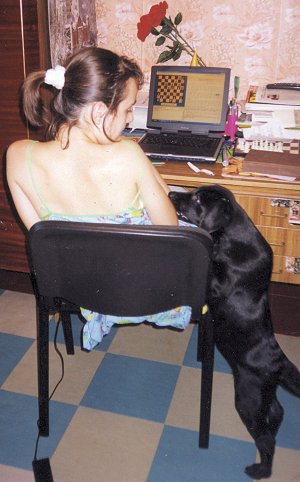
Kateryna with her beloved Nikoletta at home in Kramatorsk
We all know that every grandmaster dreams of becoming world champion.
But what are your most treasured, non-chess dreams?
A big house abroad; and it absolutely has to have a pool!
In what country?
Oh, I don’t know! Perhaps where it’s warm. In France, for example.
I was very struck by Cannes. It is a surprisingly beautiful city and the people
there very pleasant. And at night the quay all lit up – it is simply
a fairy tale!
Katja, the majority of sportsmen trust superstitions…
And where would we be without them?! Especially during competitions. I’m
not saying that I am absolutely superstitious, but things like the "winning”
clothes – these are sacred! To change out of them is quite impossible!
My dad loves to tell a story which happened during one children's international
tournament. From the start I played without defeat, therefore I didn’t
change out of my ‘lucky’ sweater. But unfortunately it tore slightly,
and my father advised me to change into a beautiful blouse with elegant frilled
sleeves.
Then I played a game with the girl from Yugoslavia, and got an advantageous
position. Right at the end I had twelve seconds, and my opponent only six.
We began to move the pieces quickly, and then my flag fell, when she still
had one second! It was very insulting. At this time I already played blitz
well. But this time I was not ready for my opponent for the simple reason that
during the course of the game my sleeves were clinging to the pieces! So you
see if I had played in my torn, but comfortable sweater, I would have certainly
won!
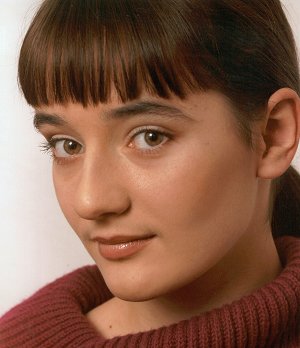
Photo: Aleksander Strinadko
Our Face of ChessBase
Katja became the mascot of the popular site ‘ChessBase’. The Germans
love to talk about the exploits of the young star, and really love to publish
photographs of her. The first Lahno appearance on ChessBase was on 14th February
2003, in a report on the Moscow Aeroflot Open. In the text under the picture
was written ‘This is the 12-year old girl who beat Judit Polgar’s
record!’
Three months on from this and the Germans dedicated a whole article to the
Ukrainian, entitled ‘Move over Judit, here comes Kateryna’.* The
author stated that Katja was continuing the tradition of her older comrades
Ruslan Ponomariov and Sergey Karjakin. The article had six (six!) pictures
of Katy.
The opinions of the writers are echoed by their readers. In June 2003, as
the European Championships in Istanbul raged on, ChessBase posted a poll on
‘Who is your favourite player’. A large percentage of the vote
went to Katja, beating Vassily Ivanchuk by 402 points!
Barely a month had passed and the young star appeared again, for her impressive
feat at the men’s tournament in Kramatorsk, where she achieved a male
GM norm. Of course, the article carried her picture!
Links


















 The
interview was conducted by Anatoly Yavorsky for
The
interview was conducted by Anatoly Yavorsky for 










